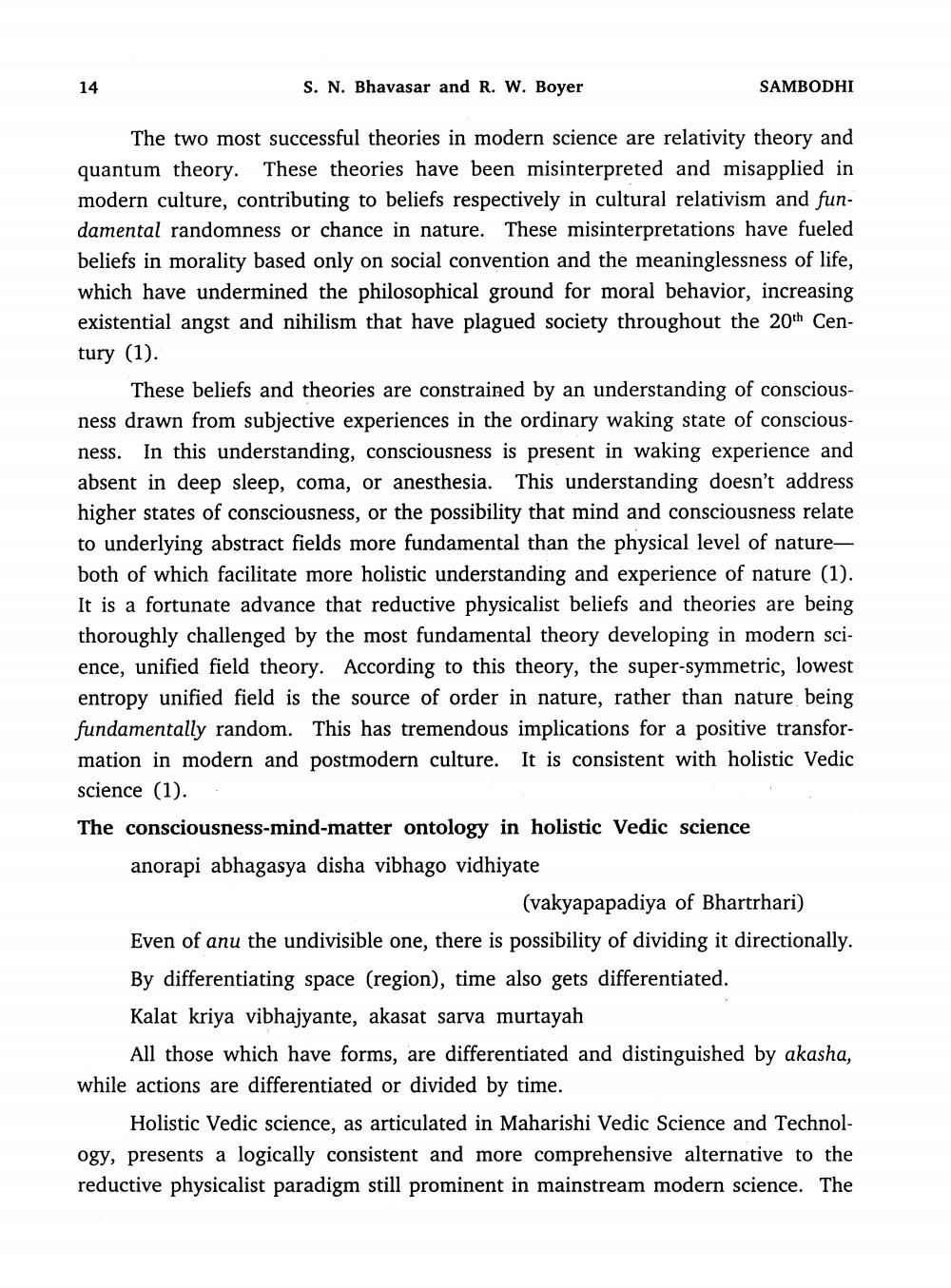________________
14
S. N. Bhavasar and R. W. Boyer
SAMBODHI
The two most successful theories in modern science are relativity theory and quantum theory. These theories have been misinterpreted and misapplied in modern culture, contributing to beliefs respectively in cultural relativism and fundamental randomness or chance in nature. These misinterpretations have fueled beliefs in morality based only on social convention and the meaninglessness of life, which have undermined the philosophical ground for moral behavior, increasing existential angst and nihilism that have plagued society throughout the 20th Century (1).
These beliefs and theories are constrained by an understanding of consciousness drawn from subjective experiences in the ordinary waking state of consciousness. In this understanding, consciousness is present in waking experience and absent in deep sleep, coma, or anesthesia. This understanding doesn't address higher states of consciousness, or the possibility that mind and consciousness relate to underlying abstract fields more fundamental than the physical level of nature— both of which facilitate more holistic understanding and experience of nature (1). It is a fortunate advance that reductive physicalist beliefs and theories are being thoroughly challenged by the most fundamental theory developing in modern science, unified field theory. According to this theory, the super-symmetric, lowest entropy unified field is the source of order in nature, rather than nature being fundamentally random. This has tremendous implications for a positive transformation in modern and postmodern culture. It is consistent with holistic Vedic science (1).
The consciousness-mind-matter ontology in holistic Vedic science
anorapi abhagasya disha vibhago vidhiyate
(vakyapapadiya of Bhartrhari)
Even of anu the undivisible one, there is possibility of dividing it directionally. By differentiating space (region), time also gets differentiated.
Kalat kriya vibhajyante, akasat sarva murtayah
All those which have forms, are differentiated and distinguished by akasha, while actions are differentiated or divided by time.
Holistic Vedic science, as articulated in Maharishi Vedic Science and Technology, presents a logically consistent and more comprehensive alternative to the reductive physicalist paradigm still prominent in mainstream modern science. The




